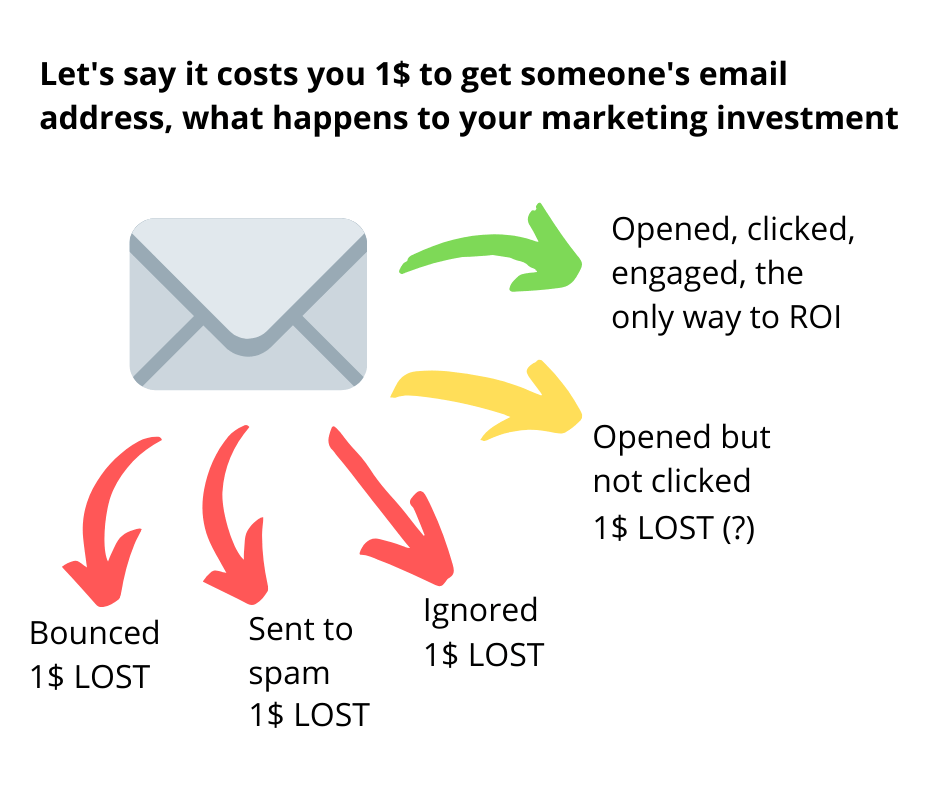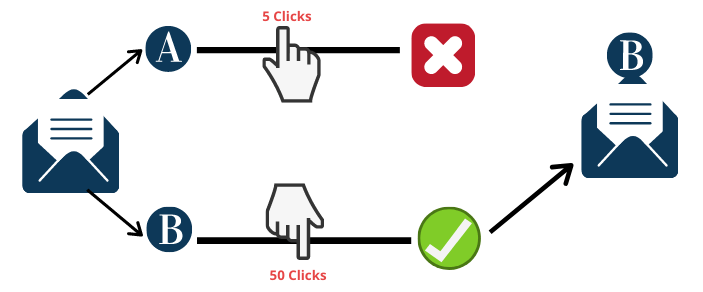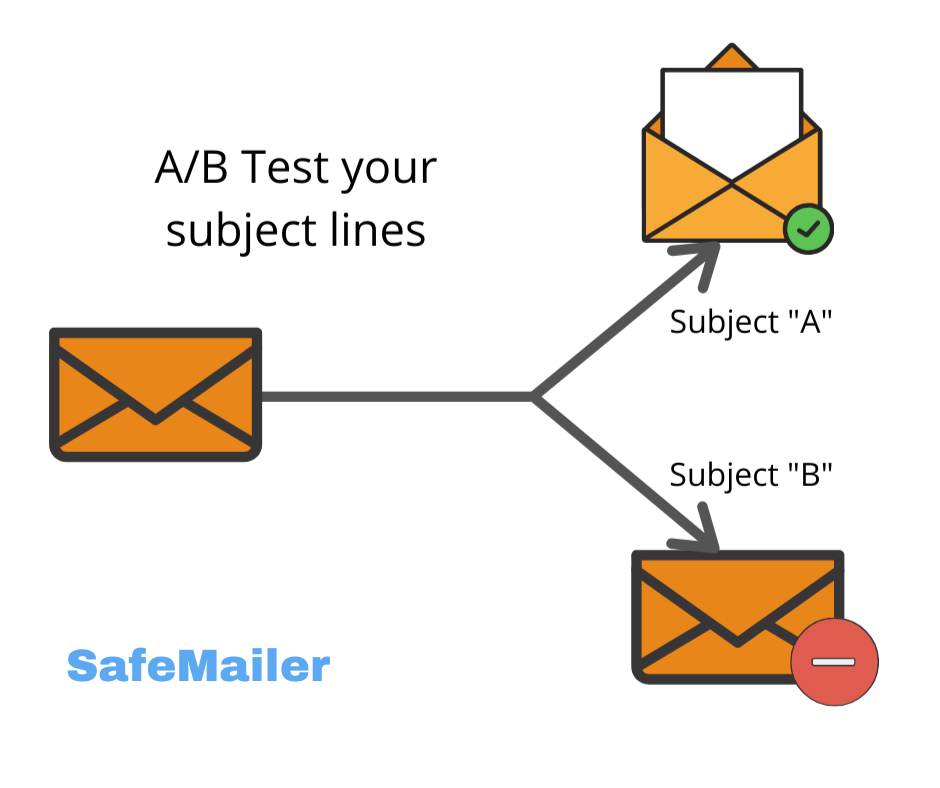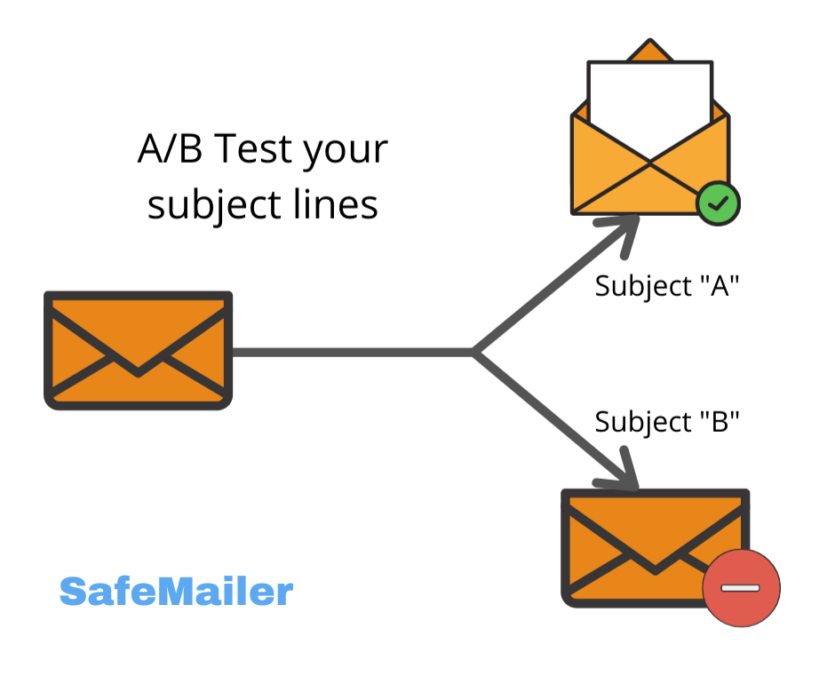A/B testing your emails is the most effective way to regularly produce engaging content, increase conversions, sales and profits. Let’s look at why and how.
Each email that you are sending out in your email marketing campaign comes at an investment. You are investing in building email lists, email copies, software and tools used to deliver the campaign.
Then each email that gets bounced, goes in Spam folder or gets simply ignored is a loss to your email campaign.

The most effective way to minimize this loss is to A/B test of your marketing emails.
Typically in A/B testing, the email variant that gives higher conversions is the winning one, and that email variant can dramatically improve the overall results of your email campaign.
What is A/B testing
A/B testing emails also known as split testing, is the process of sending one variation of your campaign to a subset of your subscribers and a different variation to another subset of subscribers. With the ultimate goal of working out which variation of the campaign garners the best results.
Split testing can vary in complexity, and simple A/B tests can include sending multiple subject lines to test which one generates more opens. While more advanced split testing could include testing completely different email templates against each other to see which one generates more click-throughs.
Another important principle of A/B testing is to change one thing at a time. The reason for this is simple: only this way you’ll find out what made the difference.
So for example, experiment only with the subject line and leave the rest of the email intact. Or add some tweaks only to the value proposition without touching anything else.

Why to do email A/B testing
1. Improved Content Engagement
Continuous A/B testing will help you to identify the type of content that is most engaging for your audience.
Over time, you will be able to continuously produce engaging content and keep your audience captivated!
2. Increased Conversion Rates
When you have better content, more people will open your emails, leading to higher conversion rates. Split testing is the easiest, most effective way of creating content that converts into conversions.
3. Increased sales
We’re finally at the most important benefit A/B testing can provide for your business — increased sales!
Fewer ignored emails, better customer engagement, more customer conversion, and other aforementioned benefits all lead to increased sale volume for your business.
4. Reduced Risks
When more and more people click on your emails it will give you increased email deliverability and higher sender reputation.
If more people engage with your emails it means more people will receive your email in the inboxes and not spam folders
Split testing emails can help you examine visitor and customer behavior on your emails, helping you increase your chances of success.
Guidelines for A/B testing your emails
What elements of your email campaign can you A/B test?
1. Subject lines
The subject line is one of the most prominent elements of your campaign when viewed in the inbox. On most devices, the subject line is formatted with darker, heavier text to help make it stand out among the other details of the email.
You can check the length of the subject line, the content, the word order and also the personalization of the email subject line.

2. Visuals
Research shows that the human brain processes visuals 60,000 times faster than text, which means using images in your email campaigns can be a powerful way to get your message across.
While using images may work for some emails, it can be a distraction in others. So discover whether or not they are working for you by A/B testing including them in your campaigns.
3. Call to action
Your calls to action are one of the most important parts of your email marketing campaigns.
They help increase your email click-through rate by making it clear to readers exactly what the next step is.
Many brands use them well in their email campaigns, including a prominent call to action that ensures readers know exactly what they need to do next.
There are generally two options for creating calls to action in your email campaigns: adding buttons or using simple hypertext links.
You can find out which approach is best for your campaigns through A/B testing.
4. Try different delivery days and times
Testing for the optimal day and time is hard—especially as online businesses cater to customers and subscribers around the globe—but the question of when it’s best to send emails continues to plague marketers. So there are two routes to take: stick to the stats or follow your gut.
Everyone wants to know what time and day works the best, but very few actually test it.
You see, there’s no stock answer to the question “what time is best?” Like everything else in marketing, the true answer is it just depends.
5. Rework the body copy
It’s a safe bet that you—like the rest of us—don’t often care for long emails.
But what else can you do to your email body copy beyond length to start A/B testing emails? How about trying a new format?
You can try different tone and messaging just to know what works better for your audience. Try a simple straight-forward message because Sometimes simple is refreshing.
Also instead of the usual chunks of copy, you can use a question-and-answer format. You can A/B test a plain-text format, rather than a flashy, over-designed newsletter—plain-text emails feel like something you would get from a friend.
Monitor these parameters while A/B testing emails
1. Open rate
This statistic tells you how many of your subscribers open a particular email.
It’s expressed as a percentage and calculated by dividing the number of emails opened by the number of emails sent minus the number of emails bounced—bounced meaning the subscriber’s email is no longer valid.
Open rate= Emails opened/ Emails sent – Emails bounced
A 30% open rate, for example, would mean that if 102 emails were sent and 2 bounced, 30 were opened.
2. Click-Through Rate or Click Rate
Look to this number to learn how many of your subscribers clicked on a link in the body of your email to visit your site.
This number is expressed as a percentage and is calculated by dividing the number of subscribers who clicked a link by the number of emails delivered multiplied by 100.
Click-trough rate= Subscribers clicked on the link/ delivered emails x 100
3. Reply rate
Which email variation did more people reply to? Split testing different variations will help with optimization of content eventually leading to more conversion
Reply rate is calculated by people who replied divided by the number of emails sent minus the number of emails bounced
Reply rate= people who replied/ Emails sent – Emails bounced
Conclusion
A/B testing emails allows you to get to the truth of what content and marketing your audience wants to see.
Here’s what to remember about A/B split testing to optimize your email campaigns:
- Create a hypothesis for how you could improve your campaign
- Test all critical elements of your email
- Use the right tools to improve the impact of your email
- Prioritize your A/B testing


Leave a Reply